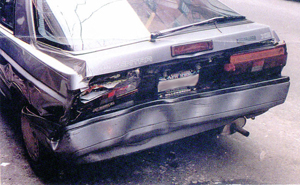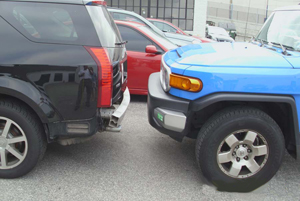Low speed rear-end impacts often result in minimal or no damage to the vehicles involved. Nevertheless, the occupants of the struck vehicle often complain of injury including whiplash, or neck, shoulder and back pain after the accident. Insurance literature sources claim that 1/3 of cases involving claims of whiplash and other injuries from low-speed impacts are fraudulent, yet, there is a body of research indicating that low speed impact involving non-damaged vehicles can lead to permanent injury. Our engineering experts can determine whether these claimed injuries are consistent with the observed damage (or lack of damage) to the vehicles. We can reconstruct the accident, determining the speeds of the vehicles and the forces and loads placed on the occupants, as well as the changes in speeds of the vehicle as a result of the collision. Depending on the results of the reconstruction, we may then perform a biomechanical simulation of the occupants of the struck vehicle, to determine the forces levels they would experience. These forces and loads can then be compared to known load tolerances of individuals, thus determining whether the claimed injuries are in fact consistent with the impact.
Our engineers have been assisting attorneys and insurance representatives in investigating accidents since 1990. We have a highly qualified staff of engineers with advanced degrees from top-tier universities who have provided testimony on behalf of both plaintiffs and defendants at trial


